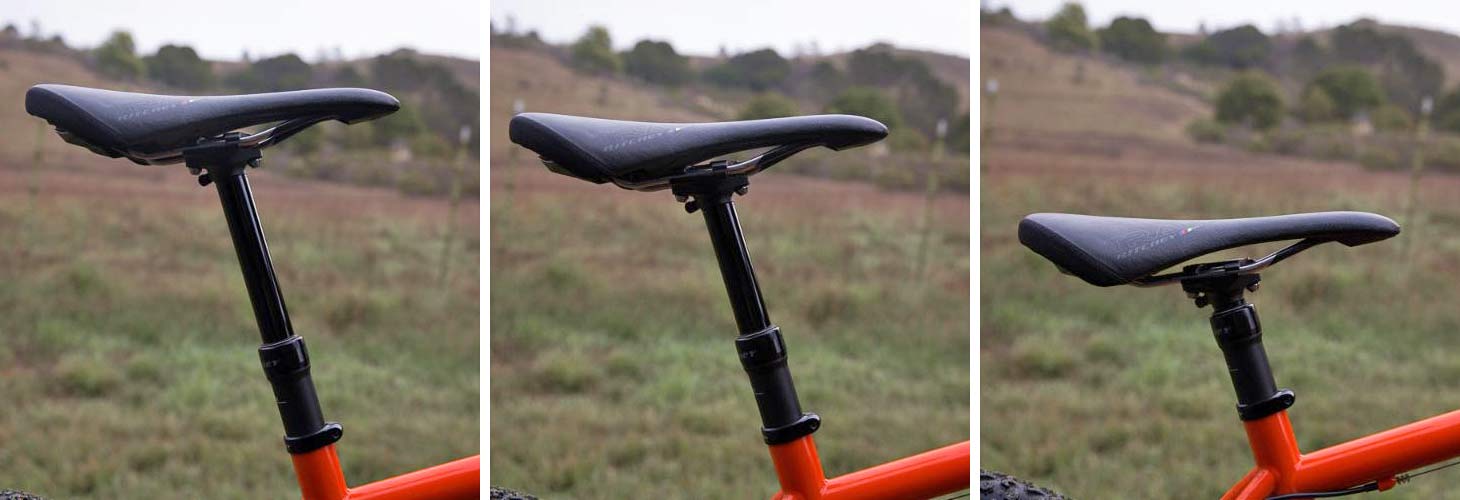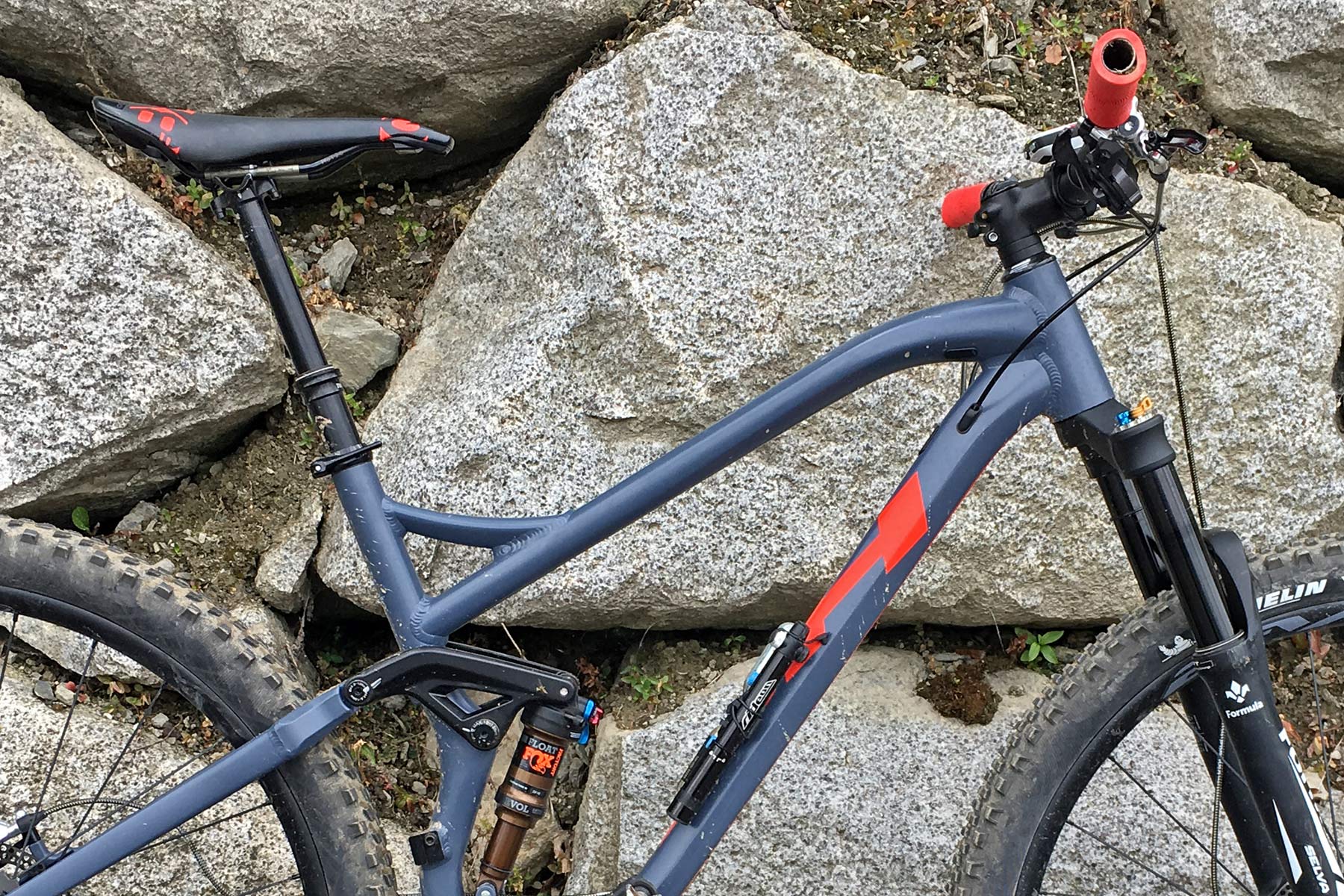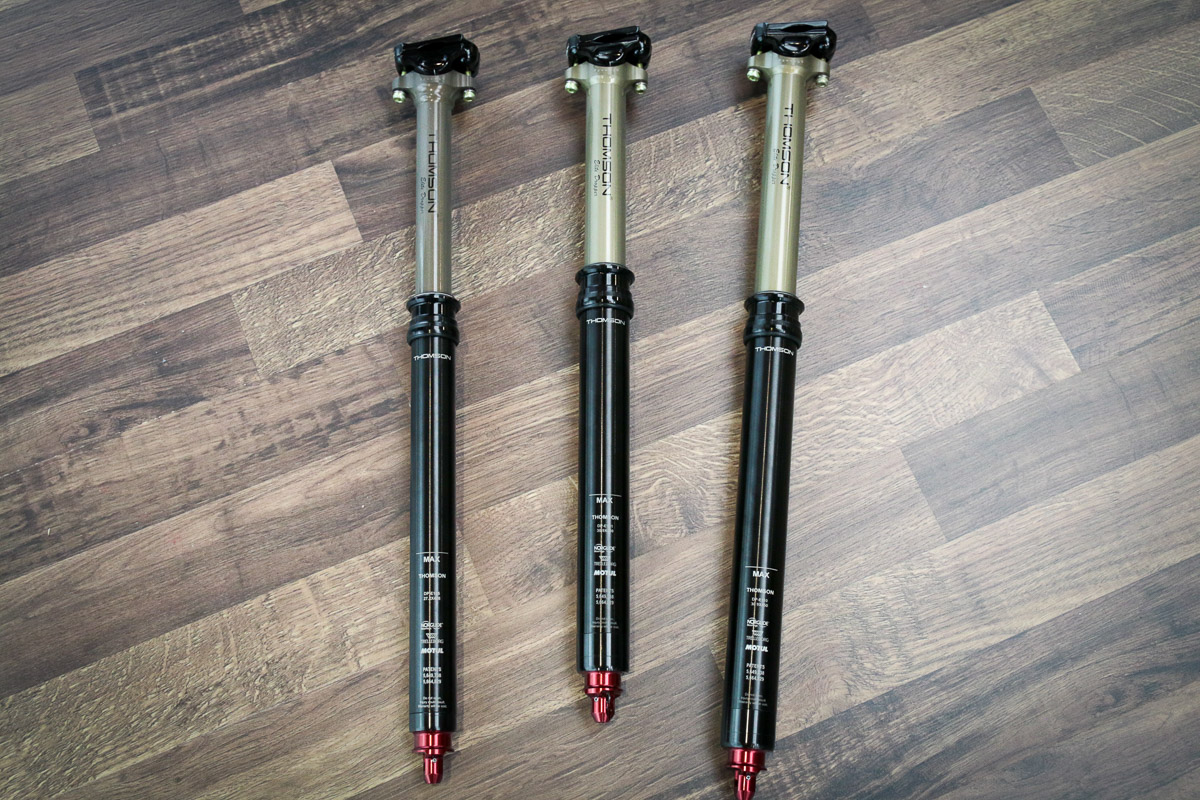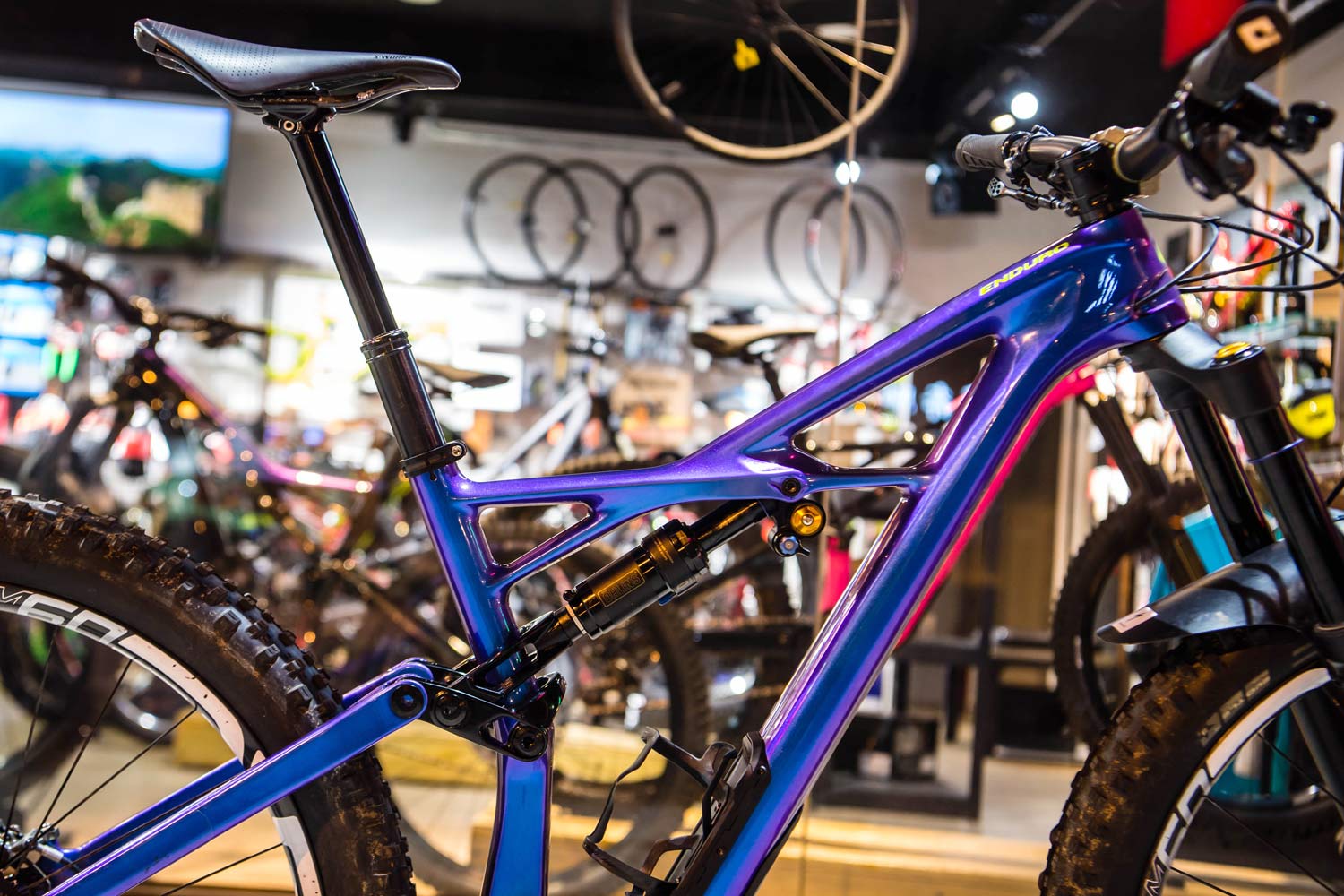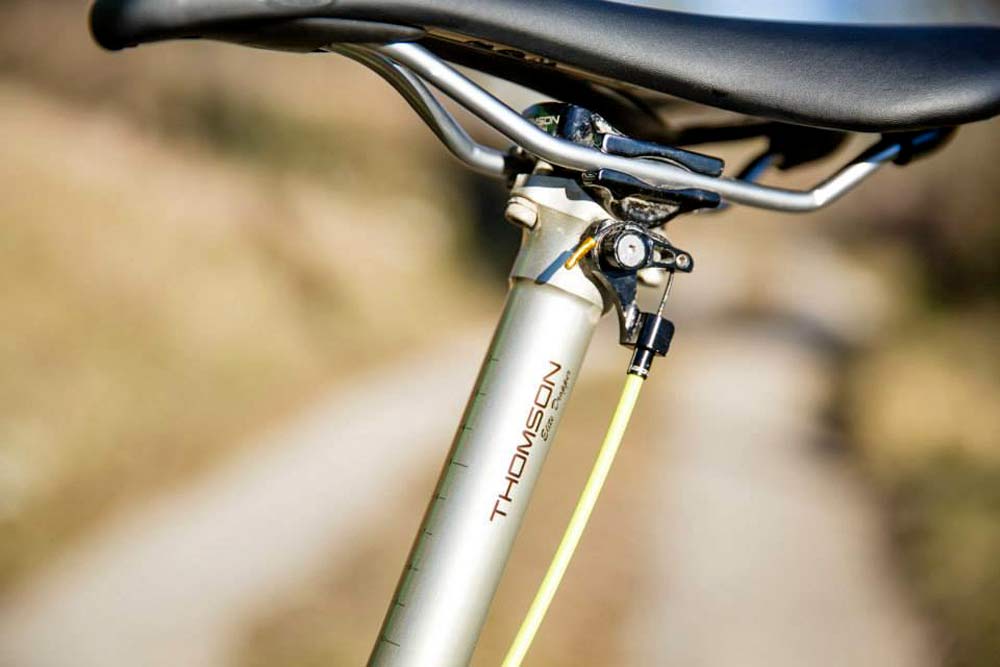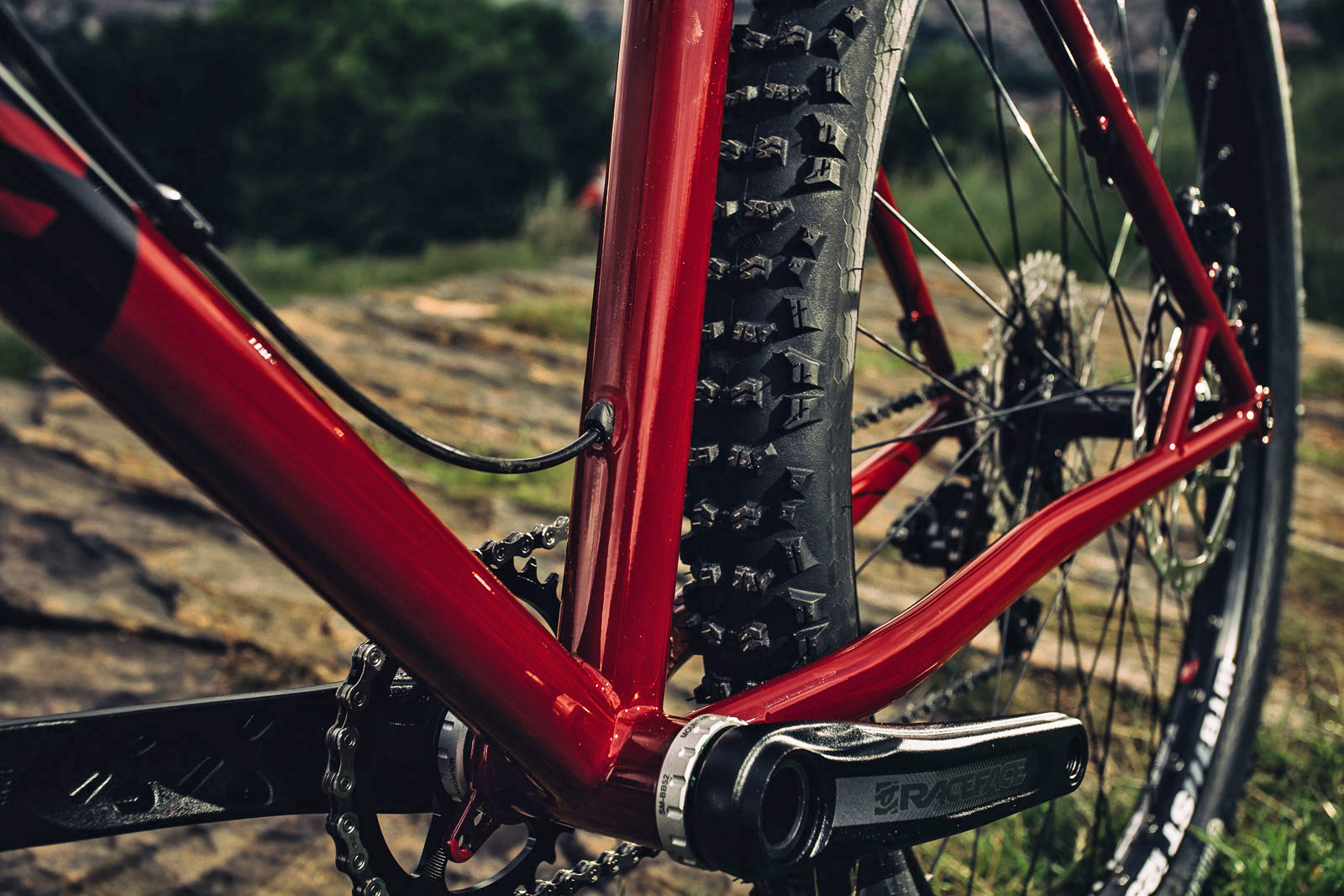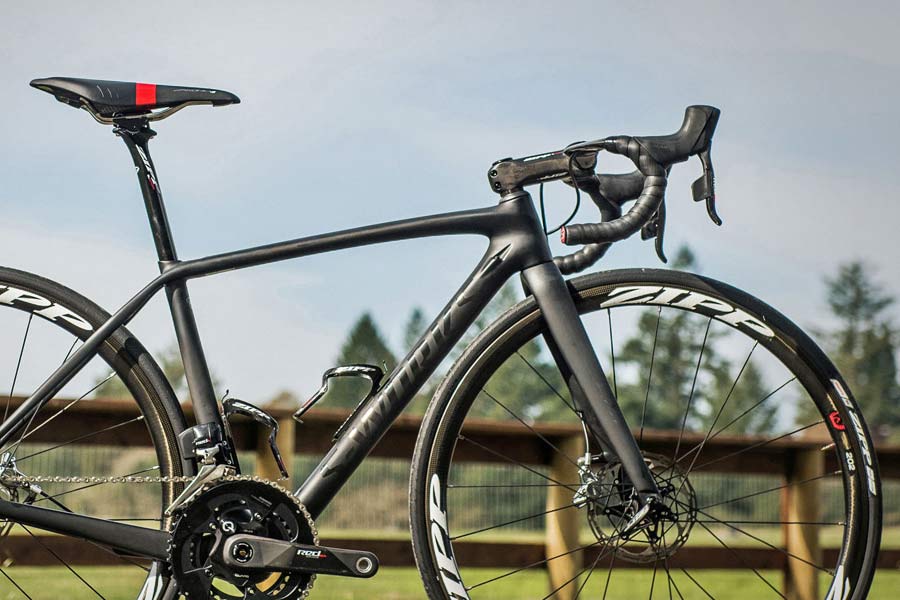Last week our Suspension Tech series kicked off a deep dive into dropper seatposts and how to pick the right travel for your bike type, body size, and riding style. The next step for riders ready to add or upgrade a dropper seatpost is figuring out which droppers will actually fit in your bike.
What you need to know to fit a dropper on your bike
We spoke with industry insiders about how to best determine the ideal dropper for your bike. Not many bike manufacturers get specific about which droppers fit their frames beyond what comes spec’ed on the bike. But for the most part, the post makers themselves offer good detailed spec dimensions for all of their posts, and instructions how to determine fit. With complete data, you (or your local bike shop) can take a few simple measurements to see what works.
Now that you want a dropper, will it fit in your seat tube?
Dropper seatposts are generally available in comparable range of sizes to regular seatposts – 27.2, 30.9, 31.6 & 34.9mm diameters- but as you get to the fringes of 27.2 and 34.9, the options become fewer.
Essentially 27.2 is the smaller, older standard used for less technical disciplines or where a bit of comfortable flex is desired.
Both 30.9 & 31.6 are very close to each other, and have become the leading modern standards. And as Stefan Sack of BikeYoke tells us, it makes little sense that one of these hasn’t made the other obsolete. But both persist with little difference, perhaps just due to inertia of the industry. They offer more stiffness than 27.2 without much weight penalty.
The largest 34.9 is another large step up, and offers improved strength and stiffness for applications like aggressive trail or enduro bikes, as well as the growing number of heavier e-bikes.
Trending towards fewer standard post diameters has made it easier for dropper seatpost manufacturers, as different diameters often mean different-sized internals – the most complicated and expensive suspension components in a dropper post. And the fewer post sizes on bikes that accept droppers, the better economy of scale for their manufacturers.
Is every dropper available in all 4 sizes?
For the most part, No.
A few companies like KS and Thomson do offer droppers in each of these sizes. But even they tend to offer shorter travel posts only in the smaller diameter due to stiffness and durability concerns, while the large diameter versions offer wider travel options.
Most dropper posts are available in 30.9 & 31.6 since those are the most common sizes for mid to long travel mountain bikes, and where the greatest dropper demand has been seen so far. It certainly also helps, as Jack Pittens of 9point8 tells us that, “with 30.9 and 31.6 being so close, the dropper can be designed around 30.9 and then machined to the larger 31.6 size with only a small weight penalty.”
Several companies offer dropper posts for 34.9 as well, to fit a newly expanding crop of longer travel mountain bikes, like those from Evil, Liteville, and Specialized’s newest Enduro, among others. There still are relatively few bikes at this size though, so for the most part the dropper manufacturers are simply machining an even larger lower stanchion to house the same 30.9/31.6 internals. BikeYoke wasn’t satisfied with ignoring the potential performance benefits of the extra room for larger internal components and a larger diameter upper stanchion. So as far as we know their newly debuted Revive Max is the only dropper currently offered with larger internals, uniquely designed for the bigger 34.9mm size.
What about 27.2mm droppers?
This is another case of weaker demand (even though that is changing a bit as droppers expand beyond trail mountain bikes and onto gravel/adventure road bikes). But also the complication of squeezing the suspension internals into the smaller outer diameter and ending up with a weaker, more flexy upper stanchion. Dropper travel – also referred to as stroke – tends to be limited to address the strength limitation.
Another key issue comes here with routing compatibility. Many of the bikes that use a 27.2mm seatpost do not include accommodation for internal cable routing (yet). And while most early dropper posts used external cable routing for handlebar-mounted remotes, consumers and the industry alike have come to agree that the benefits and fewer downsides of stealth internal routing are the way forward. A few droppers are still available with external routing for remotes or manual controls on the post head – like from KS, PNW & Thomson – and these tend to also be from manufacturers offering 27.2 droppers.
What if you don’t have internal routing? Can it be added later?
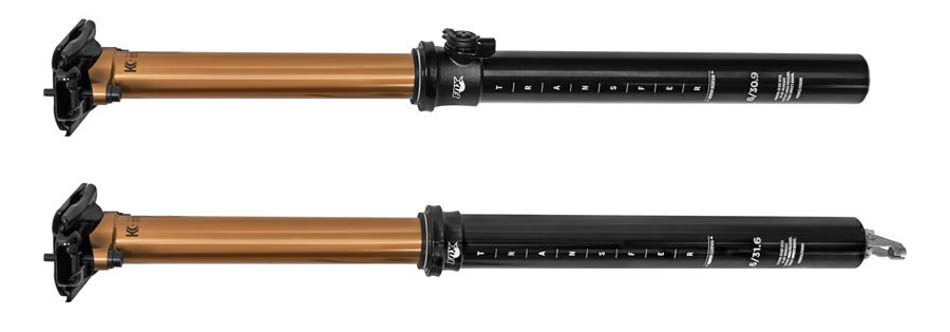
Whether a bike frame is steel, aluminum, titanium, or carbon for the most part if it doesn’t offer internal routing, your best bet is to look for an externally routed dropper like those offered by KS, Fox, RockShox, Thomson, etc. Or you could try Magura’s Vyron wireless electronic remote post.
A really common question is if it is OK to drill a hole in the lower seattube to route a dropper internally. The universal answer to that question is “Please, don’t do it!” Many riders have tried it, with mixed results. But as KS’s Rick Taylor put it “a lot of engineering goes into a bike frame, and a lot of testing to make sure they are safe. A misguided hole in some materials would cause a catastrophic failure… and nobody wants that.”
And taking a drill to your treasured bike it hardly necessary, as there are several external options available. KS even uses a proprietary setup that keeps the external cable fixed (being attached to the post lower), avoiding the issues with a remote cable moving up & down with the dropper’s position.
One interesting reminder from Jack Pittens was that many bikes without dropper-specific internal routing (especially road, gravel & cross bikes) still use a modular internal routing system for shift and brake controls. If you are running a 1x or an electronic shifting drivetrain setup (ie. SRAM Force 1, eTap, Di2 or EPS), you likely have extra cable ports that can sometimes serve for internal dropper routing.
How to measure seatpost height to determine dropper compatibility
Once you know your seatpost diameter and routing option, determining what dropper post fits and how much travel you can get is fairly simple with some careful measurement. Most dropper manufacturers make simple clear tech drawings of their posts available on their website. And there are just three key dimensions that you need to focus on:
- Travel
- Total post length
- Insertion depth
Step One: Determine compatible dropper travel range
sing your standard seatpost setup, measure the distance from the center of your saddle rails (CSR) down to the top of your bike’s seat collar/clamp (TSC). This is your seatpost extension length (SEL), or how much post you have sticking out of the frame.
(CSR <——> TSC) = SEL
To translate that into dropper post lengths that will work on your bike, measure the distance between CSR and the bottom of the dropper’s collar (BDC). We’ll call this the Dropper Extension Length (DEL, or 225.7mm in the diagram above). If your DEL measurement is less than or equal to your SEL, then that dropper’s travel will work should fit on your bike.
DEL ≤ SEL = Compatible dropper travel for your bike
If your DEL > SEL, then you won’t be able to slide your dropper seatpost far enough into your frame and the saddle will end up too high. It’s worth noting that if your DEL and SEL numbers are very close, you will need to be careful about changing your saddle to a taller one in the future.
Step Two: Determine compatible post lengths
Now measure your existing seatpost’s entire length (SPL). Often this is marked on the post, so if you see something like 30.9×400, that means you have a 400mm long post with a 30.9mm diameter. Compare that length against the desired dropper post’s length.
Next, subtract your original seatpost extension length (SEL) figure from its total length (SPL) to determine how much Post Insertion Length (PIL) you’re using.
SPL – SEL = PIL
Now measure the main shaft of the dropper post below the collar. If that number is similar to your PIL, then the post should work. If it’s shorter, you’ll need to confirm that enough of the dropper’s shaft will be inside your frame to meet that dropper post’s minimum insertion depth. Too little post inside your frame can damage your bike, post or both.
Step Three: Determine frame insertion depth compatibility
If your dropper’s shaft length is shorter than your PIL but still meets its minimum insertion length requirement, you can skip this step. If your dropper’s shaft is longer than your PIL, then you’ll need to make sure it will slide far enough into your seat tube. Bends in the frame or water bottle bolts/bosses can stop a too-long post from sliding far enough down. And unlike a standard seatpost, you usually can’t cut a dropper to size.
You can visually check from the outside with a tape measure to see if you have plenty of length to insert the dropper into your bike. But the best way is to mark this dropper insertion length onto your current rigid post from its end, then see if you can insert it far enough into your frame.
Update: A German reader sent in a link to this useful dropper sizing spreadsheet, put together by another German cyclist. It collects most (but not all) current dropper offerings from several manufacturers, and includes helpful diagrams under the ‘Legend’ column illustrating their fit range: sp00n.net/bike/seatposts/
What do I do if my dropper seatpost won’t fit my frame?
If you don’t have enough seatpost extension, you can always try a shorter travel/stroke dropper post. If you don’t have enough insertion length in your seatpost, you can try a combination of shorter travel droppers, or even a post from another brand as some slide deeper into your frame than others. 9point8 even offers one – the Fall Line R – that can have its lower stanchion trimmed to fit a wider range of frames.
That should be enough to figure out which dropper seatposts will fit in your bike. Join us next week to learn about the maintenance your new dropper seatpost will need!
The fun never ends. Stay tuned for a new post each week that explores one small suspension tech, tuning or product topic. Check out past posts here. Got a question you want answered? Email us. Want your brand or product featured? We can do that, too.
